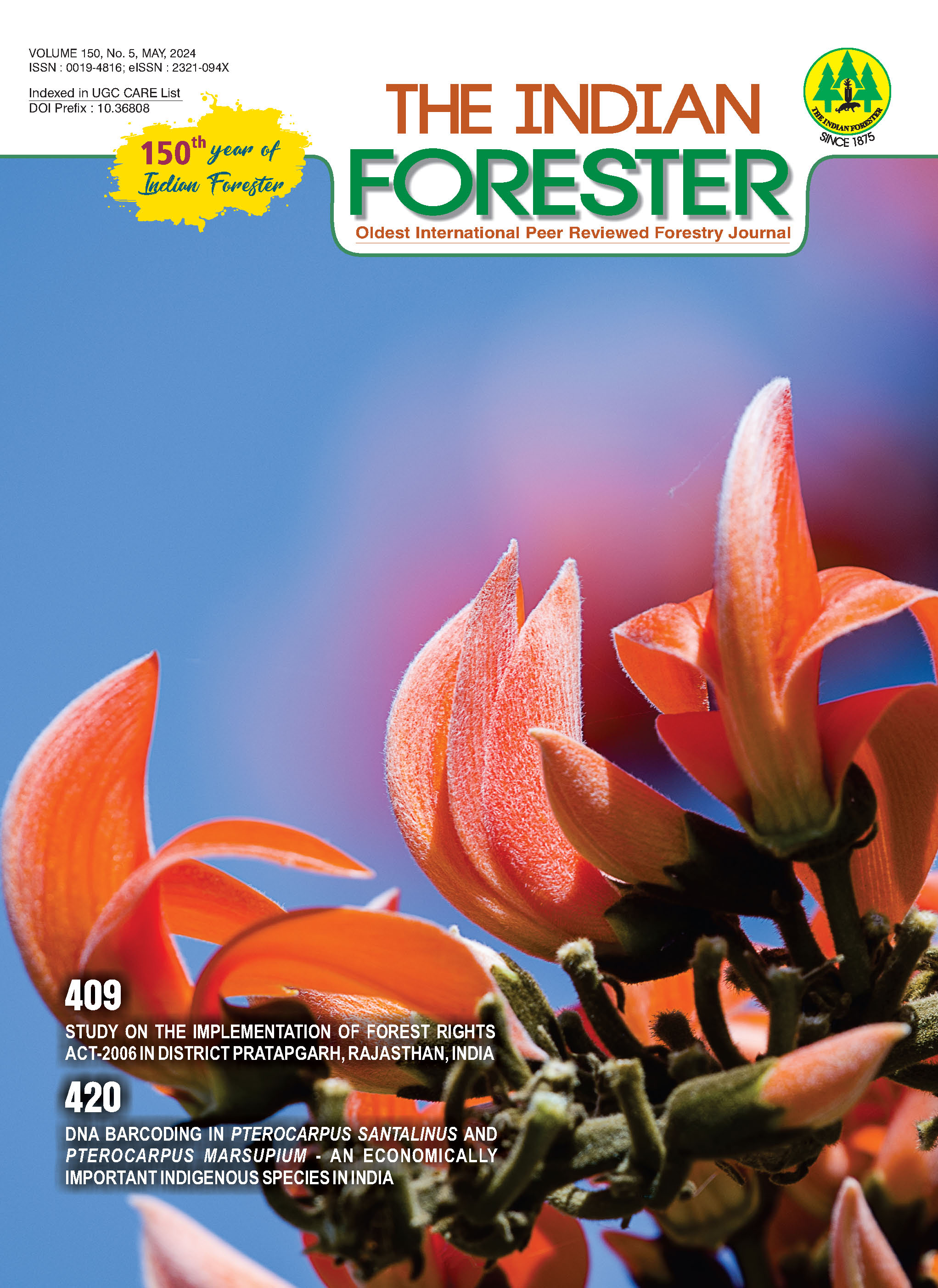Study on the Implementation of Forest Rights Act-2006 in District Pratapgarh, Rajasthan, India
DOI:
https://doi.org/10.36808/if/2024/v150i5/170265Keywords:
Forest Rights Act-2006, District Level Committee (DLC)Abstract
The implementation of the Forest Rights Act 2006 was studied from January 2020 to December 2021 in the entire territory of the Forest Division of Pratapgarh. After the implementation of the Forest Rights Act -2006 a total of 15735 applications were received in the district as a claim for forest rights. Out of those, 6734 claims were accepted by the District Level Committee (DLC), but 9001 claims were rejected by the District Level Committee (DLC). A total of 2406 cases were rejected. Forest claims were again reviewed and only 505 cases were accepted by the District Level Committee (DLC). So, the total number of forest rights claims accepted by the District Level committee after the review is 7239, and the rest of the cases are in the category of rejected forest claims for various reasons. These rejected forest claim holders are still inside the forest of Pratapgarh without any legal sanctity. So, the present study is based on the implementation and impact of the Forest Rights Act-2006 on the tribals of Pratpagrah as well as the biodiversity loss due to the illegal encroachment of tribals in the forest of Pratpgarh. At the same time, this study is also important considering the recent Hon'ble Supreme Court judgment of February 13, 2019, which ordered the states to evict all the people who had their claims rejected under the Act by July 24, 2019. Furthermore, it directed the Forest Survey of India to conduct a satellite survey and place on record encroachment positions before and after evictions."
References
Bandi M. (2012). Implementation of Forest Rights Act: undoing the Historical Injustices? Working Paper No. 117 (RULNR Working Paper No. 18), 2012, Research Unit for Livelihoods and Natural Resources- Centre for Economic and Social Studies, Hyderabad.
Bhowmik S.K. (1988). Development Perspectives for Tribals. Economic and Political Weekly, 23(20): 1005-1007. http://www.jstor.org/stable/4378488 insurgency/article 13606760.ECE (Accessed 30.08.2015).
Mishra P.K. (2012). Forest Policies and Tribal Livelihood Organizational Perspective in Bidhan Kanti Das and Rajat Kanti Das (Ed), Rethinking Tribe in Indian Context, realities, Issues&Challenges (Rawat Publications, Jaipur, India).
Sarangi T.K. (2006). The Forest Rights Act 2006 in protected areas of Odisha, India: Contextualizing the conflict between conservation and livelihood, Asia Pacific Journal of Environment Law, 20(1): 2017, 180-205.
Sathyapalan J. and Reddy M.G. (2012). Recognition of Forest Rights and livelihood of tribal Communities, Centre for Economic and Social Studies Monograph Series No. 15 November 2010. Ministry of Tribal Affairs, Amended Rules, 2012. The Scheduled Tribes and Other Traditional Forest Dwellers (Recognition of Forest Rights) Act, 2006 Amended rules 2012, Gazette of India-Extraordinary.
Downloads
Downloads
Published
How to Cite
Issue
Section
License
Unless otherwise stated, copyright or similar rights in all materials presented on the site, including graphical images, are owned by Indian Forester.





